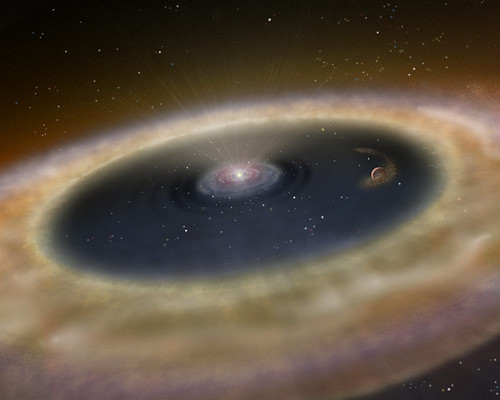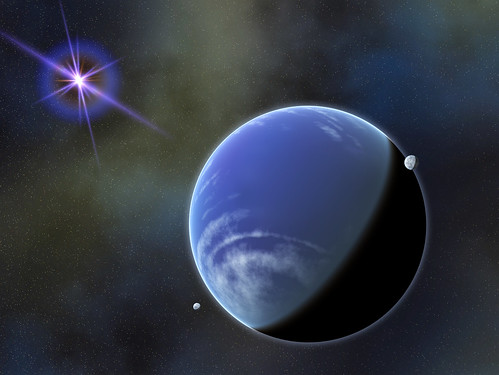Hunting for Hints of Planets
- By Sara Mitchell
- October 26, 2011
- Comments Off on Hunting for Hints of Planets
Last week, about 120 exoplanet-hunters from as far away as Japan and the Netherlands descended upon NASA Goddard for the Signposts of Planets conference, an opportunity for scientists to discuss cutting-edge research on the detection and study of extrasolar planets in the debris disks around stars. The three-day event included talks from researchers in the field, and the release of four major stories about exoplanets – especially where and how they form.

Credit: Karen L. Teramura, UH IfA
What are the “signposts” of planets? Conference organizer Marc Kuchner told us, “Many stars have disks around them that represent planetary systems in the process of formation or belts of debris analogous to our asteroid belt. Everyone wants to see pictures of exoplanets, but often these disks are much much easier to see than the planets themselves. So the goal of the Signposts of Planets meeting was to try to figure out what we can learn about planets by studying these disks that contain them. The planets tend to sculpt the disks into interesting patterns: gaps, spirals, ring, and so on, and there’s a lot we can learn by reading these signposts.”
When asked about the highlights of the conference, Dr. Kuchner mentioned a tour of the cleanroom where the James Webb Space Telescope is currently being assembled here at Goddard. But the attendees also had a fun night out at a local crab shack: “It’s hard to get into too fierce a battle over your disk models when you’re spraying crab bits on each other.”
We wanted to recap the press releases that came out during the conference in a special round-up! Click on the links to read the full stories.
Meet SAO 206462, a star located about 456 light-years away in the constellation Lupus. In this image from the Subaru Telescope, you can see spiral-like structures of gas and dust around the star, possibly caused by the gravitational pull of planets in orbit. The telescope captured the system in a fairly short-lived early phase of stellar formation, and asymmetry in the disk’s structure may indicate two hidden planets under development! This marks the first time that scientists have directly observed these spiral-like structures, after previously predicting their existence in computer simulations.
This artist’s conception shows nearby star Eta Corvi being bombarded with comets, based on observations made by the Spitzer Space Telescope. The comets were detected through the spectral signatures of water ice, organics and rock around the star, and this period of the star’s life may be similar to what our own Sun experienced around the same age (which is called the Late Heavy Bombardment). What does this have to do with planets? Scientists speculate that the storm of comets in our solar system may have delivered crucial ingredients to Earth for the formation of life, such as water and carbon. They also affected the surface structure of our Moon.
This data from the 10-meter Keck telescopes may be a baby picture of the youngest planet ever directly observed by astronomers. Planet LkCa 15 b is 5 times younger than the previous record-holder, and was spotted by Adam Kraus of the University of Hawaii with a technique called aperture mask interferometry. By manipulating the light from the system, Kraus was able to view the disk around the star and spot gaps in the dust that might indicate forming planets. This direct look also allows for measurements of the baby planet. Isn’t it cute?

Credit: NASA GSFC/Francis Reddy
Brown dwarf WD 0806-661 B is the size of a planet – but it’s actually an object that formed much like a star out of dust and gas. This one happens to be the coldest object ever directly photographed outside of our solar system. Brown dwarfs are interesting for planetary researchers to study because their atmospheres are similar to those of planets. Scientists are interested in studying the composition of these atmospheres, and the detail in newly-acquired data is allowing for much more precise measurements.





